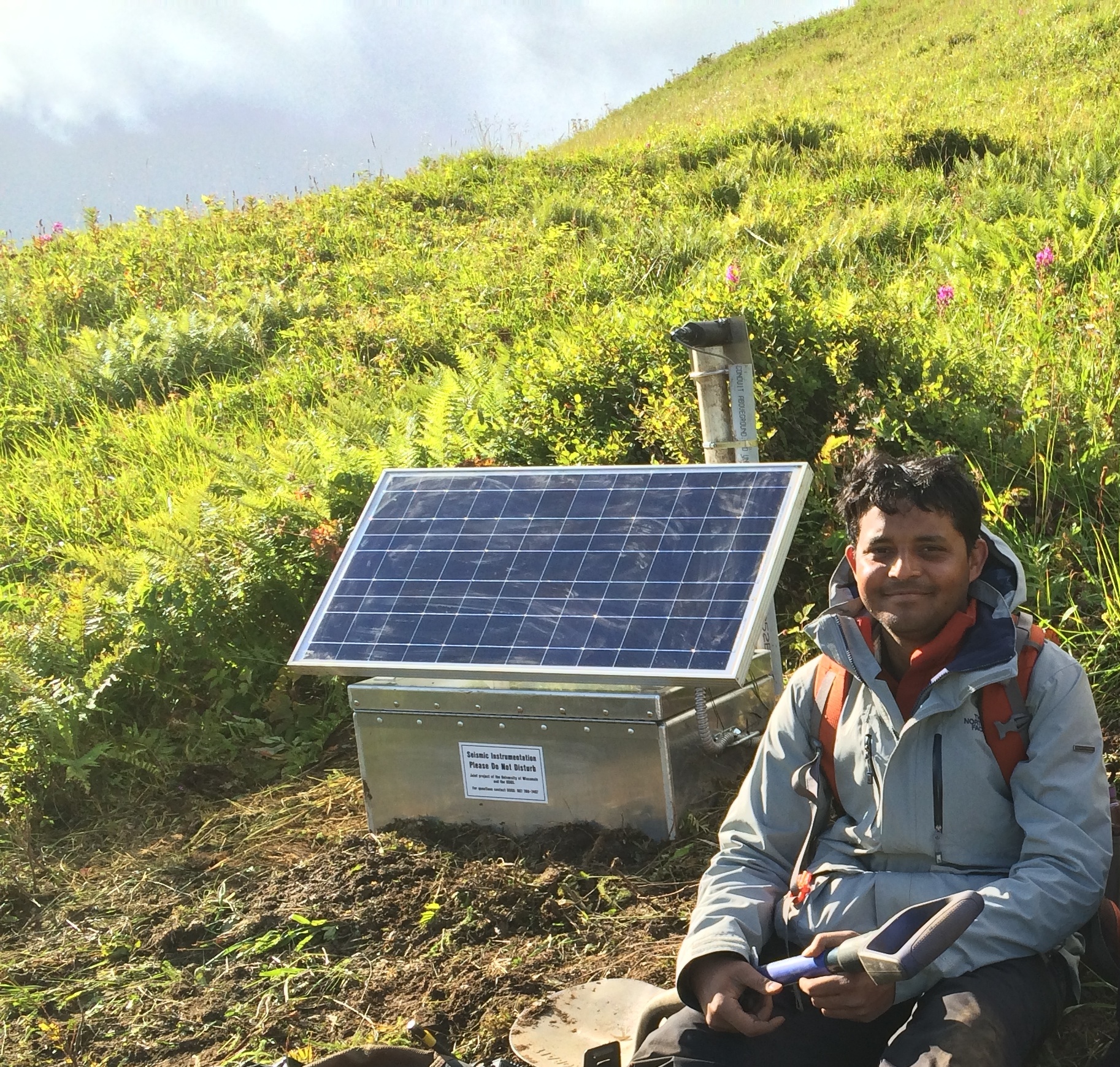
Earthquakes are an almost hourly occurrence in the Aleutian Islands. But most are too tiny to feel, and even the bigger ones are usually over in seconds. Just last week, a 4.7M quake went all but unnoticed in Unalaska.
But there’s another type of earthquake that runs deeper than those daily events: a slow earthquake. That’s what scientists are now looking for underneath the Aleutians.
Abhijit Ghosh is a geophysicist at the University of California Riverside. He says slow earthquakes are deep, drawn-out tremors that can last for weeks, months or even years.
“So it releases that energy — magnitude seven or eight, however large it is — but over a long period of time, so we don’t really feel the ground shaking,” he says.
Ghosh wants to know if all that energy is loading up a different part of fault — maybe precipitating more destructive events, like Alaska’s 1964 Good Friday quake. To find out, Ghosh worked with the Alaska Volcano Observatory to set up an array of seismometers on Unalaska. (He wouldn’t say where, specifically, to keep the equipment safe from tampering.) He’ll install two more this summer, and they’ll all run until 2016.
Ghosh hopes the “array of arrays” will shed light on how slow quakes affect the ones we feel.
“It seems like they do interact, they do interplay,” he says. “The mode of communication might be different in different places. But to be honest, we just started understanding this phenomenon.”
The idea of slow quakes only dates back about a decade — but Ghosh says there’s evidence that one happened in Japan, just before the Fukushima disaster in 2011. The next year, Ghosh saw the tell-tale tremor of a slow quake under Unalaska while running tests on neighboring Akutan Island.
“In Akutan, we were able to record data for two months,” he says, “and in that two months, we recorded tremor activity, a signature of slow earthquakes, almost every day.”
That means he can’t be sure how long the quake went on. He’s hoping for a better picture this summer, when he returns to Unalaska to retrieve the first year’s seismic data from his array.
